Shaivism or the worship of Shiva as the Supreme Being is prevalent all over India. In Tamil Nadu, the Shiva temples take a different form from those in other parts of India. No, I am not referring to the temple architecture alone. Shiva, as elsewhere is worshipped here too in the form of a lingam. Once you step out into corridor running round the sanctum sanctorum, you will see in line, idols of 63 Shaivite saints, known as Nayanars. These saints not only served Shiva but also his devotees. Three among the 63 are most renowned for their hymns, together styled Thevaram or Tevaram, where the history, legend, story of Shiva’s valor, His moods, penances and above all, the importance/relevance of the particular temple is beautifully woven in. The hymns typically comprise of 10-11 verses, with each verse made up of 4-line melodic stanzas. Yes, they are set to music too and to this day, Thevaram is sung in all these temples, especially those hymns that extol the highlights of that temple and Shiva’s form and actions therein. There are 796 hymns in the Thevaram and categorized into 7 volumes. The first 3 are written by Sambandhar, the next 3 by Appar & the seventh one by Sundarar, the three most renowned of the 63 Nayanars. The number of temples that are predominantly named in the Thevaram and where the Nayanars, originally sung them are 276, of which 267 are in Tamil Nadu. There is one each in Nepal and Tibet and two in Sri Lanka, as well. These 276 temples have earned the title “Paadal Petra Sthalam” or temples which have been mentioned by the Nayanars in their hymns.
Have visited some of these Paadal Petra Sthalams, but here was an opportunity to visit, pray, admire and what not, three such temples over 3 days. Really jumped at the idea. Our first temple was the Veerattaneeswarar or Veerateeswarar Temple in a place called Thiruvathigai, about 3 kilometers from the town of Panruti and around 25 kilometers from Cuddalore.
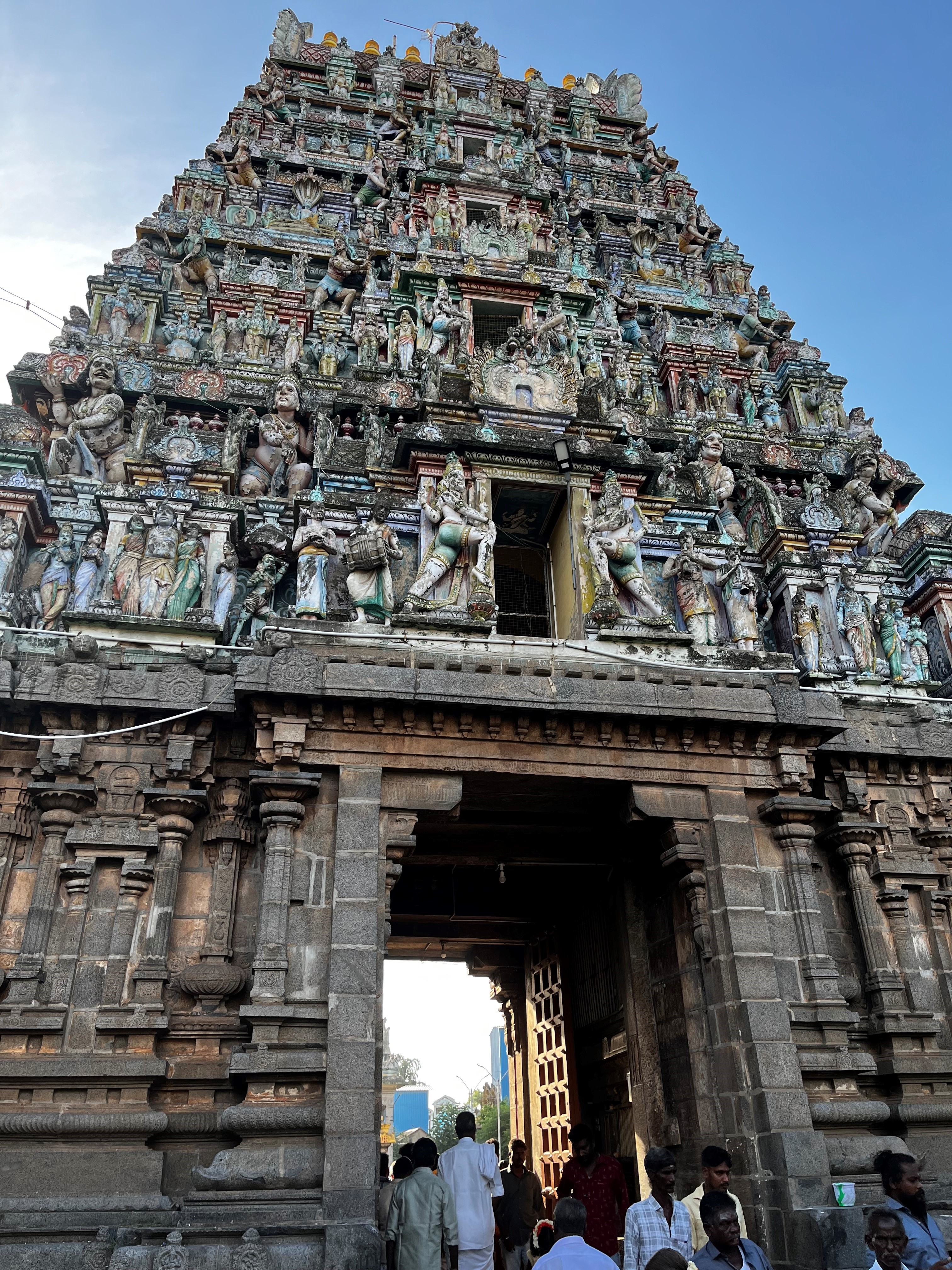
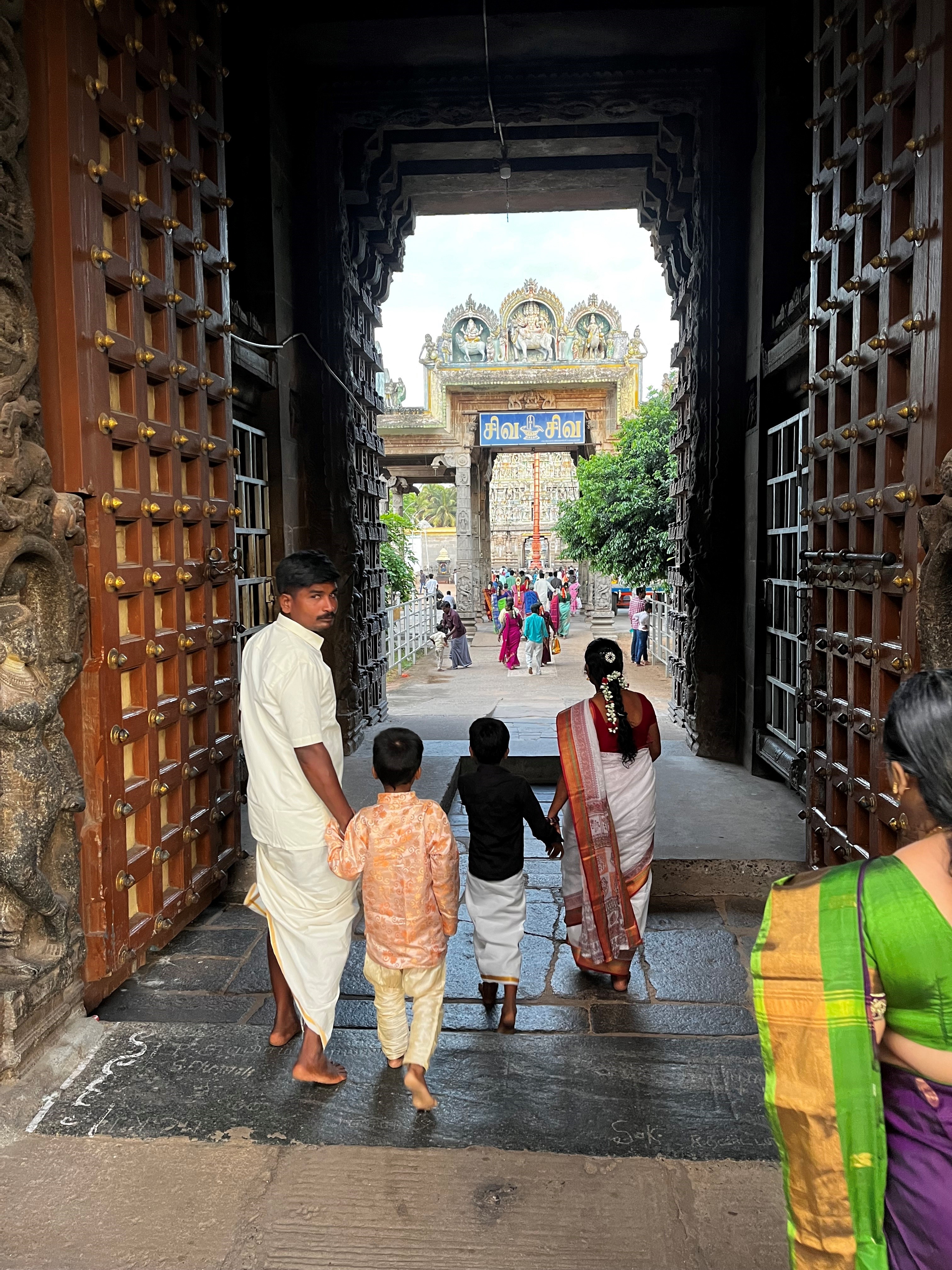
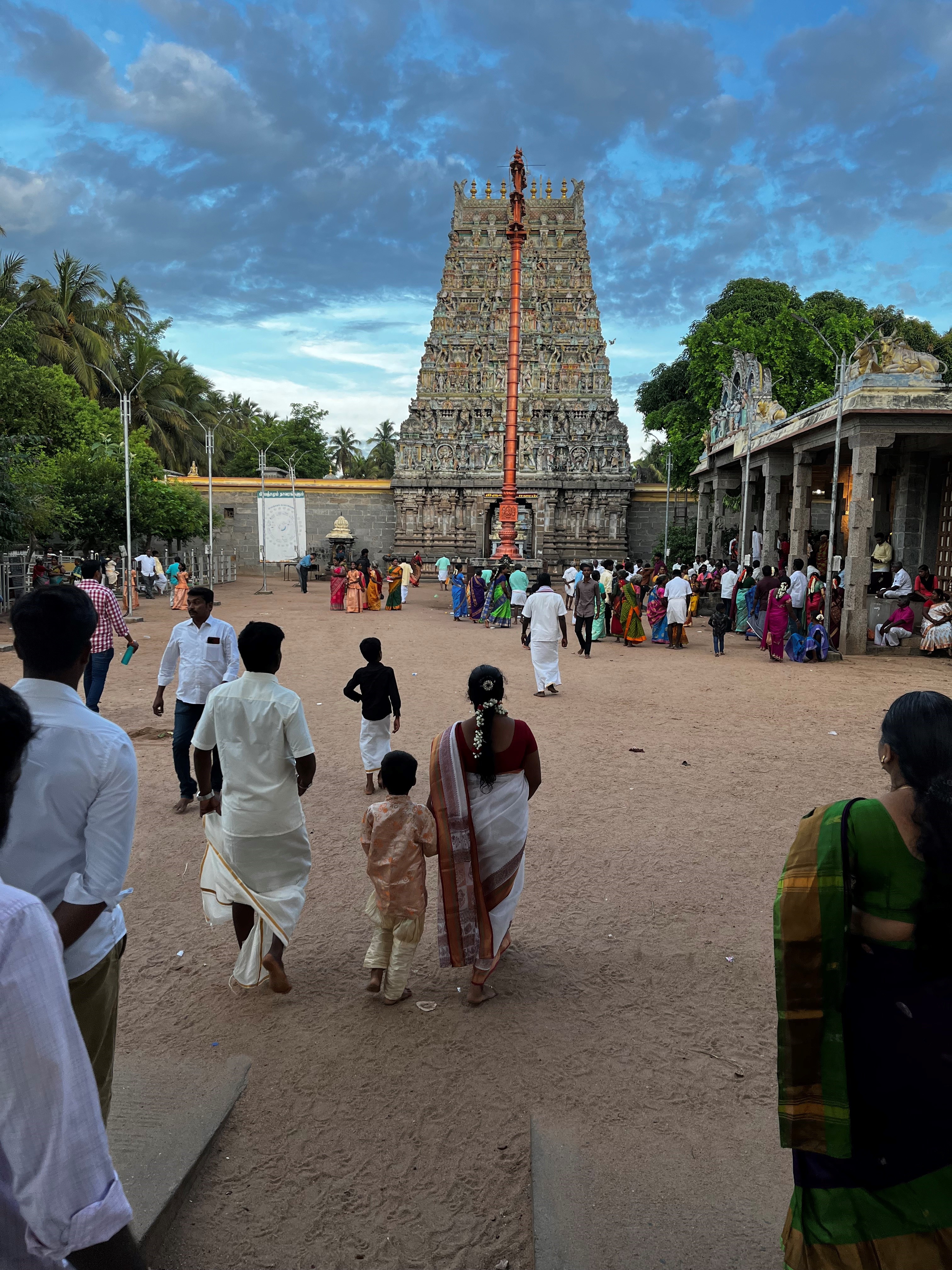
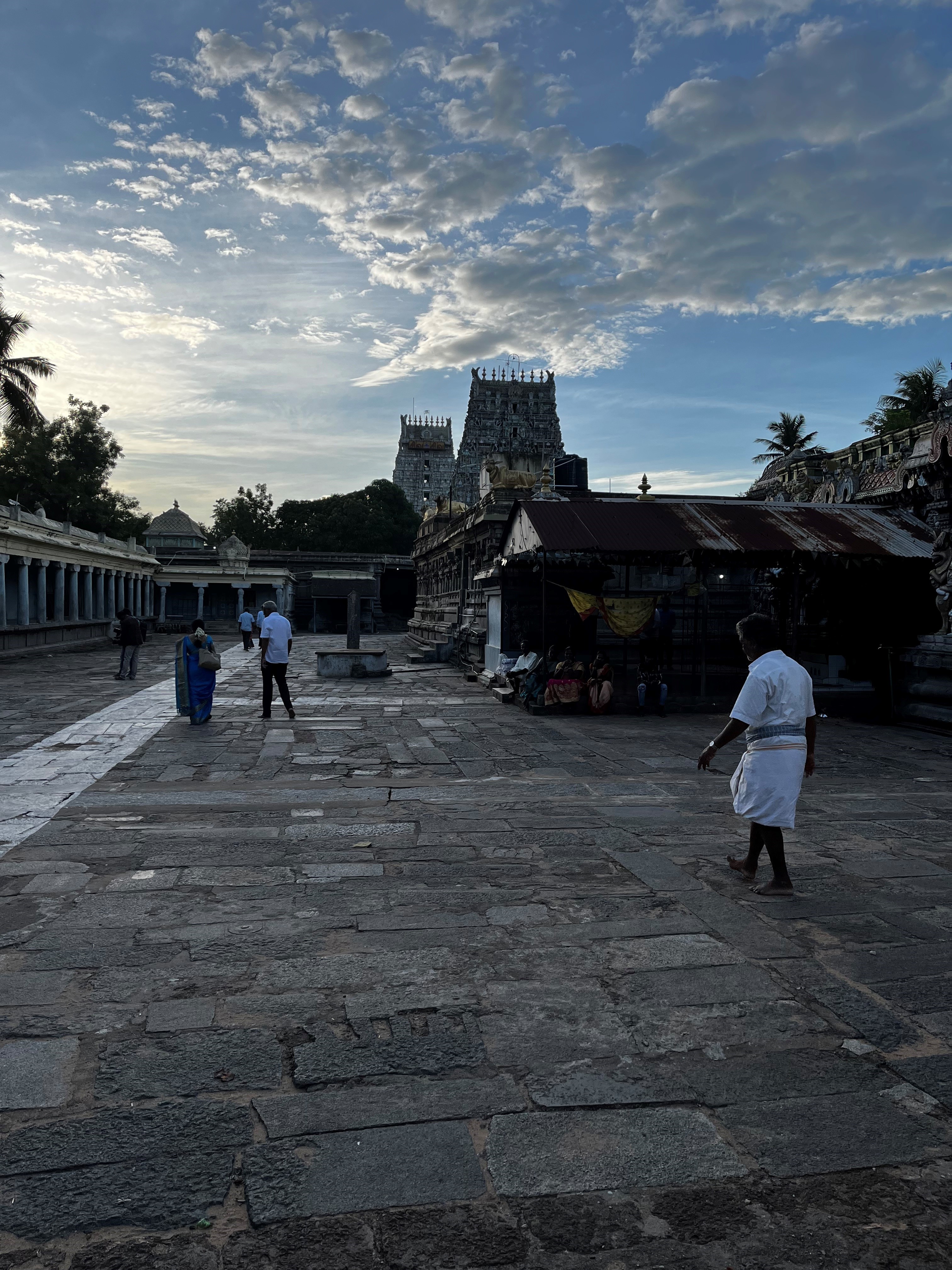

DAY 1: 6 AM. The sun was lazily coming up from sleep. We were at the temple entrance and surprised to find large crowds dressed in finery making their way to the temple. A large number of cars, vans and buses were parked outside and even on the roads adjoining the temple. It was an auspicious ‘Muhurtham’ day, and we could see scores of couples eager to tie the knot in the temple, along with their relatives and friends.
As we looked up at the temple tower (gopuram), with its intricate carvings, only one word escaped our lips — ‘Massive’. Once inside the temple complex, the same word ‘Massive’ kept echoing in our ears, as we marveled at the huge courtyards, numerous pillared halls that were packed with marriage parties. Easily, this is one of the largest temple complexes in Tamil Nadu. While the gopuram is in the typical Dravidian tiered style, the Vimana or the structure above the sanctum sanctorum is with a square base and conical top, much like the Brigadeeswara Temple in Thanjavur or the Brihadisvara Temple in GKC. Learnt it was the other way round. Raja Raja Chola stayed in this temple to study the architecture and replicate the style in Thanjavur. So, this temple is older than the ‘Great Living Chola Temples’, (Great Living Chola Temple at GKC) though portions were added later during the rule of the Pandyas too.
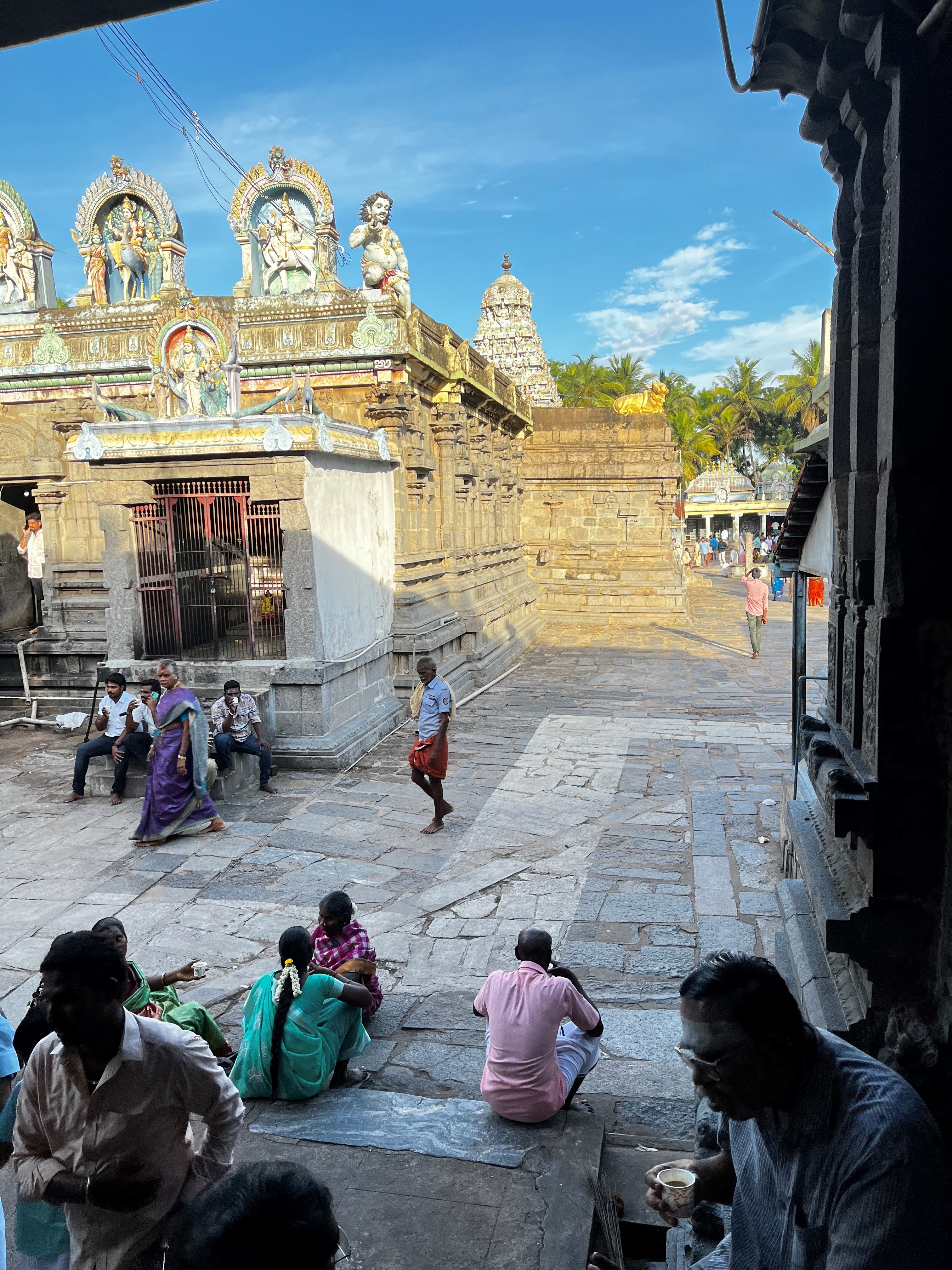
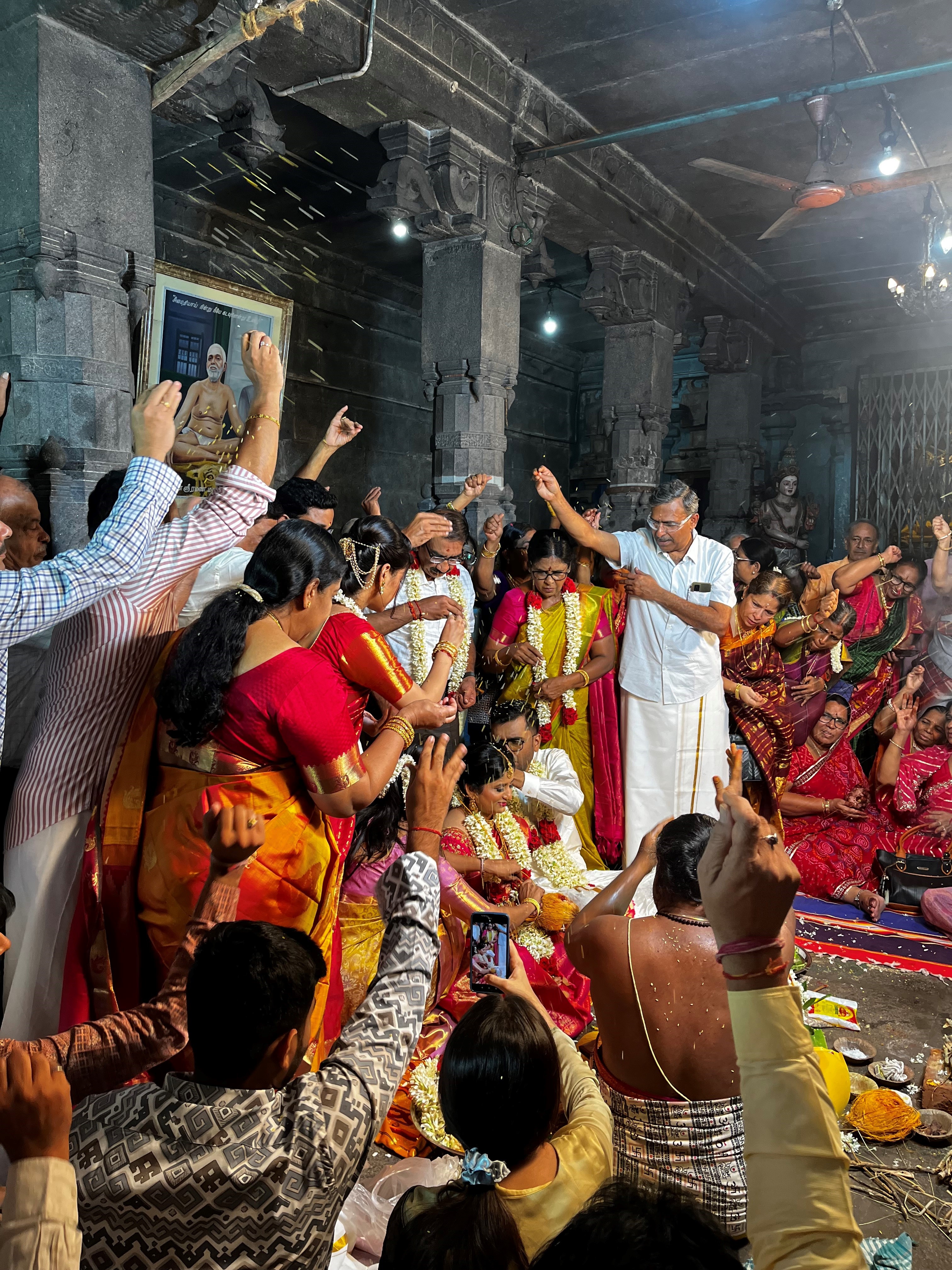
A huge Nandi before the sanctum, that is on an elevated level. The first sight of Veerattaneeswarar in lingam form, takes one’s breath away. A massive lingam. Having completed the darshan, we visited the shrine of His consort Thiripurasundari, also addressed as Periyanayaki and other smaller shrines within the complex.

Had mentioned that this is a Paadal Petra Sthalam. Dharmasena, born Hindu but converted to Jainism. His sister, Thilagavathi was a Shiva devotee, who lived in Thiruvatigai and prayed at this temple. Dharmasena had a severe stomach ailment and when he visited his sister, she smeared the Holy ash (Vibhuti) on him, and he started getting better. Spontaneously he burst into songs in this temple, praising Shiva, gave up Jainism and embraced Shaivism. He became renowned as the great Shaivite saint, Appar or Thirunavukkarasar, who sang some of the Thevaram hymns. Just near the temple entrance is a separate shrine dedicated to Appar and Thilagavathi. As it was not open, in the early hours, couldn’t go inside. Surprisingly, there is an idol of The Buddha too, inside this temple complex. Buddha in a Shiva temple? Could not gather any explanations for this.
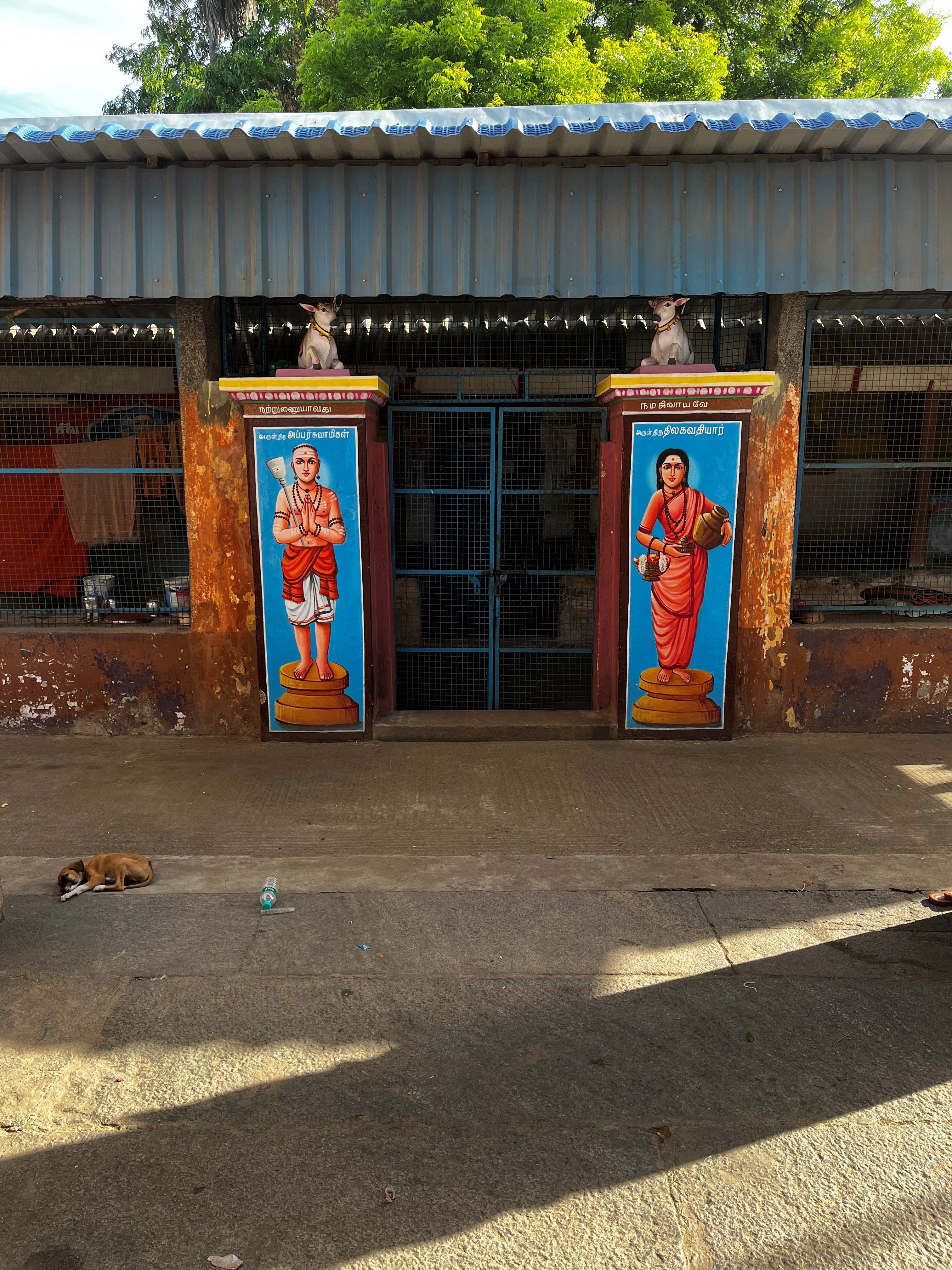
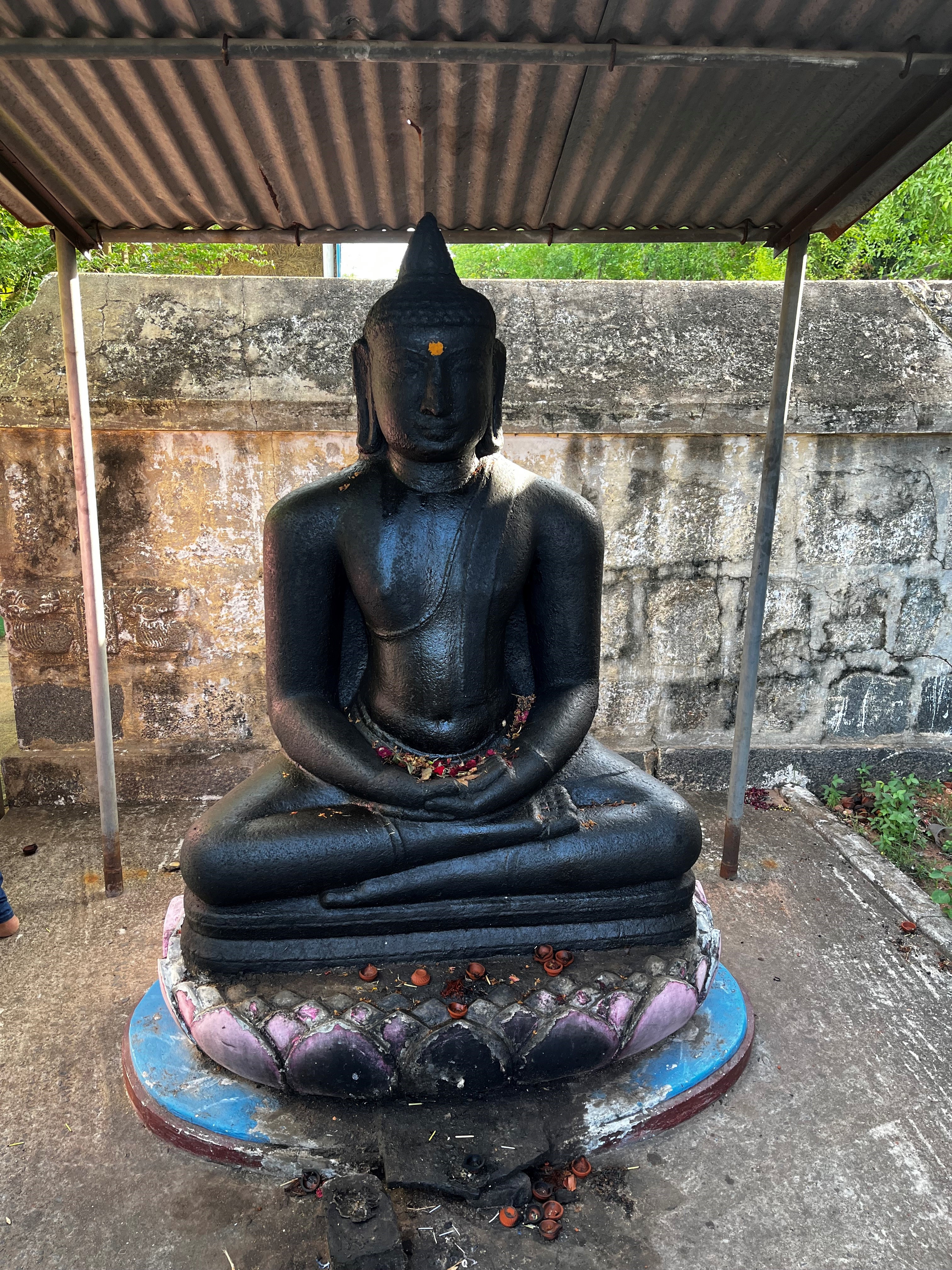
The ruling Pandya king who followed Jainism, was furious at Appar embracing Shaivism, and threw him into a lime kiln/well. Appar came out unscathed. He was then hurled into the sea, chained with stones, but Appar floated to safety and reached Thirupadripuliyur, where again, he sang hymns at the Padaleeswarar temple, that we would visit next. The king was so impressed that he too converted to Shaivism.
Any temple visit for me has three significant aspects — 1) Expressing gratitude to the Almighty 2) Appreciating the history of that temple 3) Learning about the legends associated with the temple, that could extend beyond history. So, in any post about temples, readers should be made aware of the legend surrounding the temple, that has been passed on from one generation to another. What is the legend of Veerataneeswarar? Shiva is worshipped here in his destructive form. There are 8 Veerataneeswarar temples in Tamil Nadu, all of which celebrate Shiva’s victories over different asuras or demons. The asuras had built Tripura or three cities, one in the underworld, one on earth and one on Heaven and they started attacking all celestial bodies, secure in the knowledge that the three cities could be destroyed together by one arrow when they were in alignment. It is said when everyone appealed to Shiva, He with the help of Vishnu as the arrow, reduced all the three cities (Tripura) to ashes, and it was here in Thiruvatigai, that He dipped his fingers in the ashes before applying them in 3 lines on His forehead — a practice Shaivites continue to this day.
Day 2: 4.30 PM: Driving through some narrow bazaar streets in the town of Cuddalore, we reached the area known as Thirupadripuliyur, where the ancient Shiva temple dedicated to Padaleeswarar (as Shiva is worshipped here) lies. First impression — No big crowd and the temple gopuram appeared quite small. It was under renovation too. As we stepped in, we realized that the temple complex was indeed quite large, with its long, pillared corridors, with painted kolams or rangoli on the stone floors.
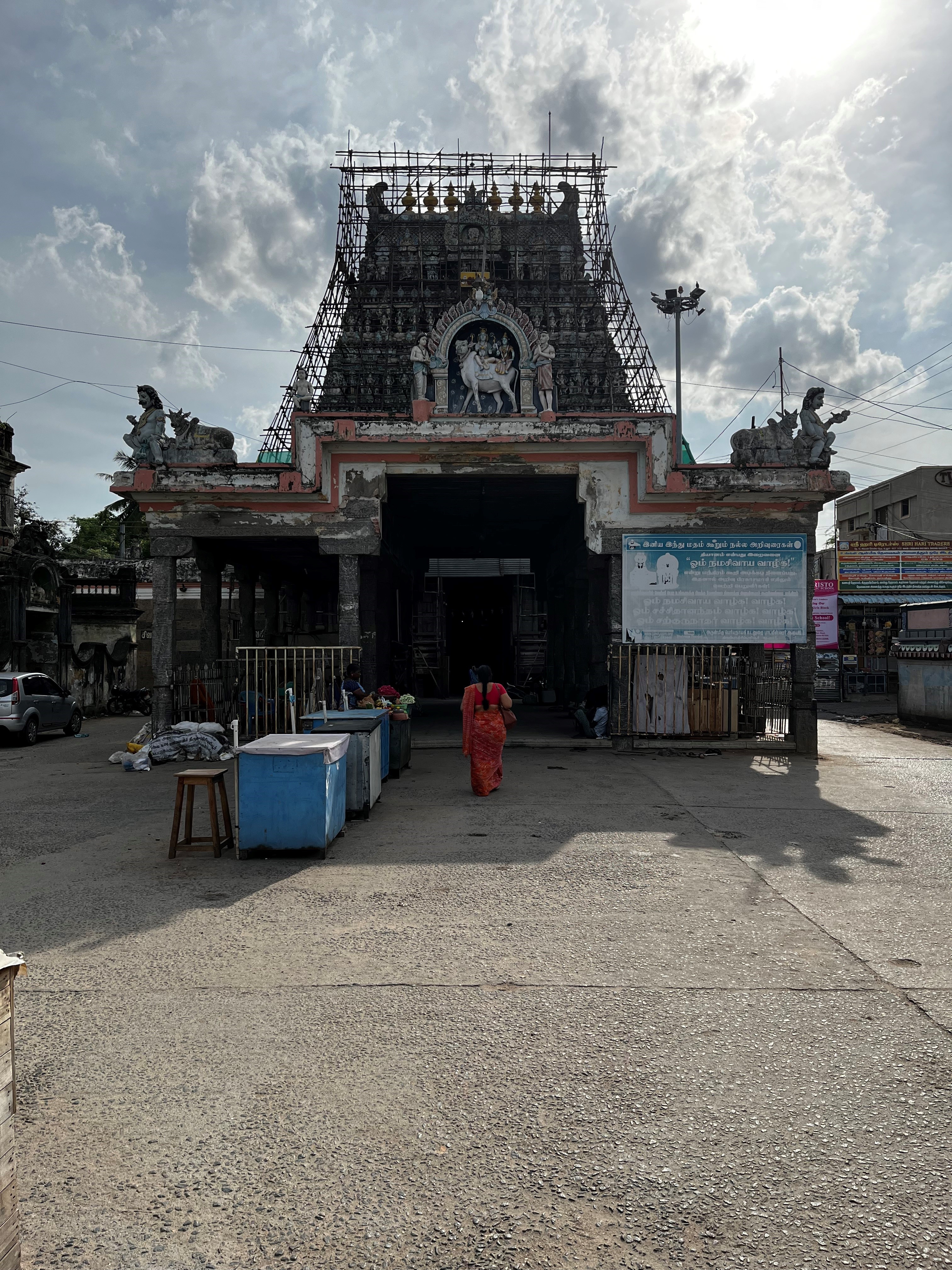

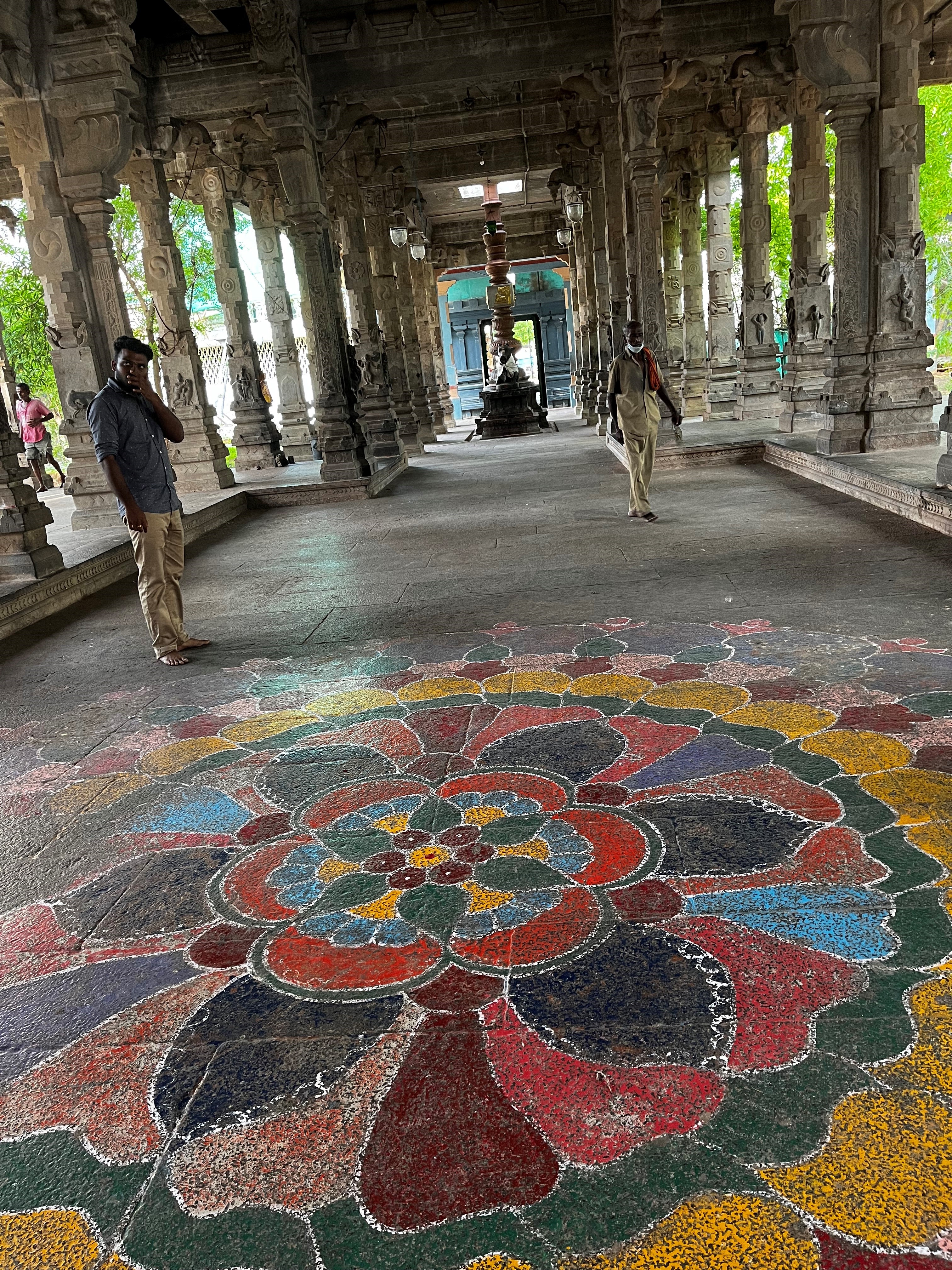
It is said that if we worship Shiva here once, it is equivalent to worshipping Him 16 times in Kashi, 8 times in Tiruvannamalai and 3 times in Chidambaram. Such is the importance of this temple, though unknown to many. An ancient temple over 2000 years old, built and extended by the Cholas, Pandyas and Pallavas, it figures as a Paadal Petra Sthalam. Appar, after miraculously surviving an attempt to drown him, floated to safety in Thirupadripuliyur and sang hymns praising Shiva in this temple. We had a good darshan of Padaleeswarar in the form of a lingam and also that of His consort, worshipped here as Periyanayaki. Unlike in other Shiva temples, where after the last puja at night, idol of the Lord is taken to the chamber of the Goddess, here it is the Goddess who goes to the Lord’s chamber. It is said, that once when Shiva and Parvati were playing dice and Parvati playfully closed Shiva’s eyes with her hands to prevent Him from seeing. The whole world went dark, and Parvati realized her mistake. Shiva asked her to visit 1008 Shiva temples, till she reached one, where her left shoulder and left eye twitched. Parvati faithfully followed this order and when she reached here, being the 1007th temple, She felt the twitching. She started her penance in a formless mode and ultimately united with Shiva. The ancient Sthal vriksha, the Pathiri tree can still be seen. Apart from the outstanding architecture, one can see panels (recent additions), depicting the history and legends associated with this temple.
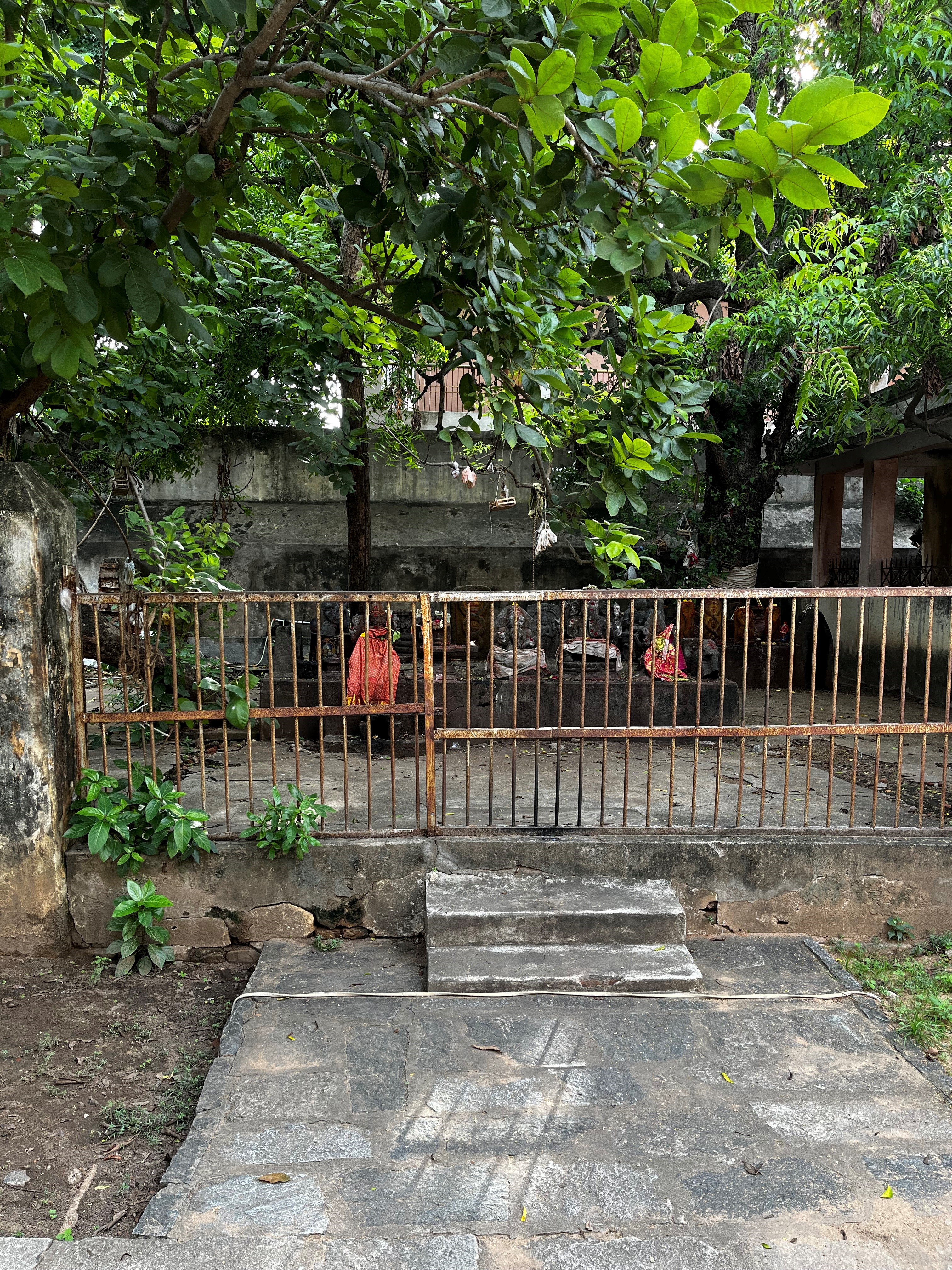
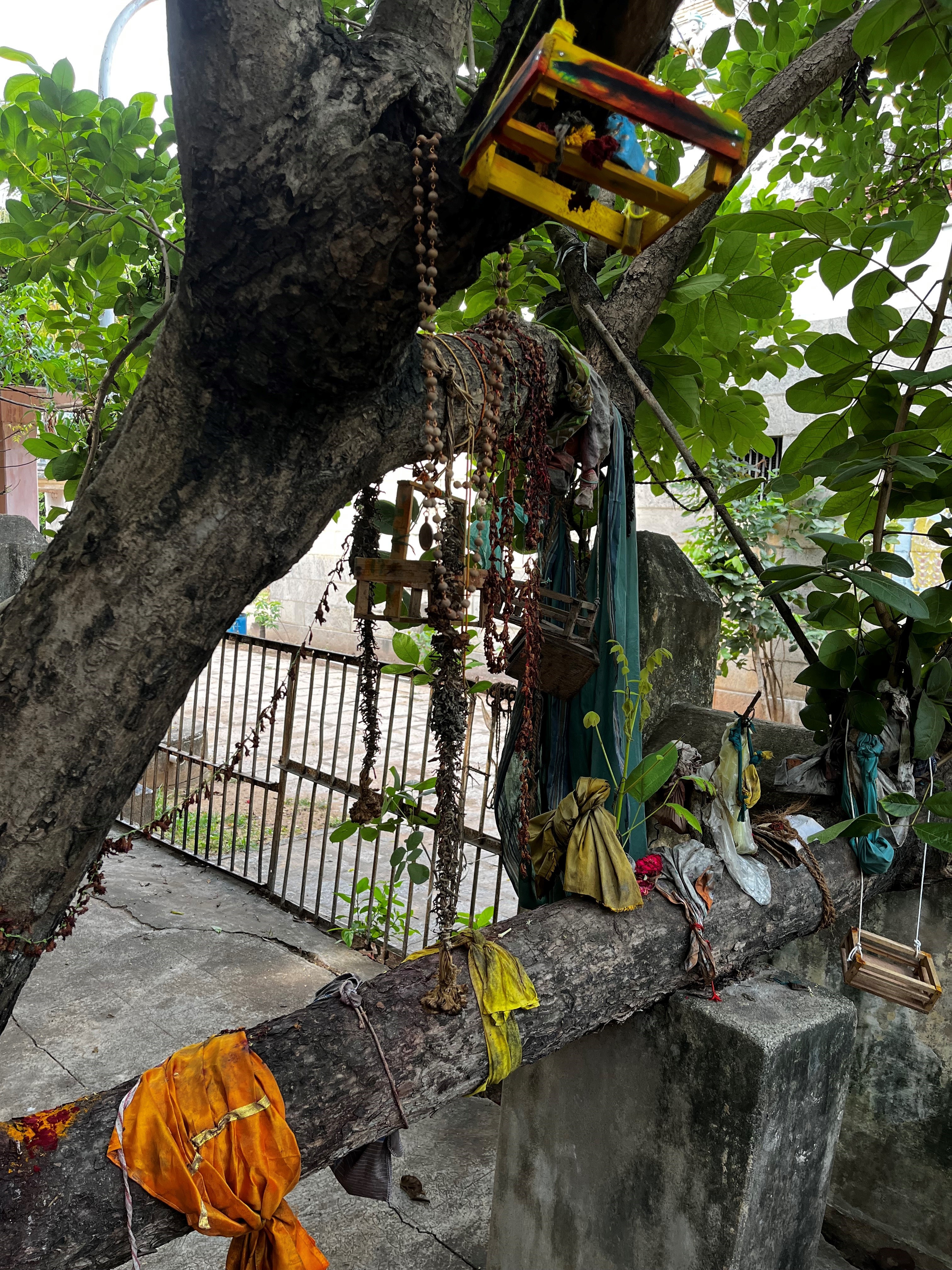
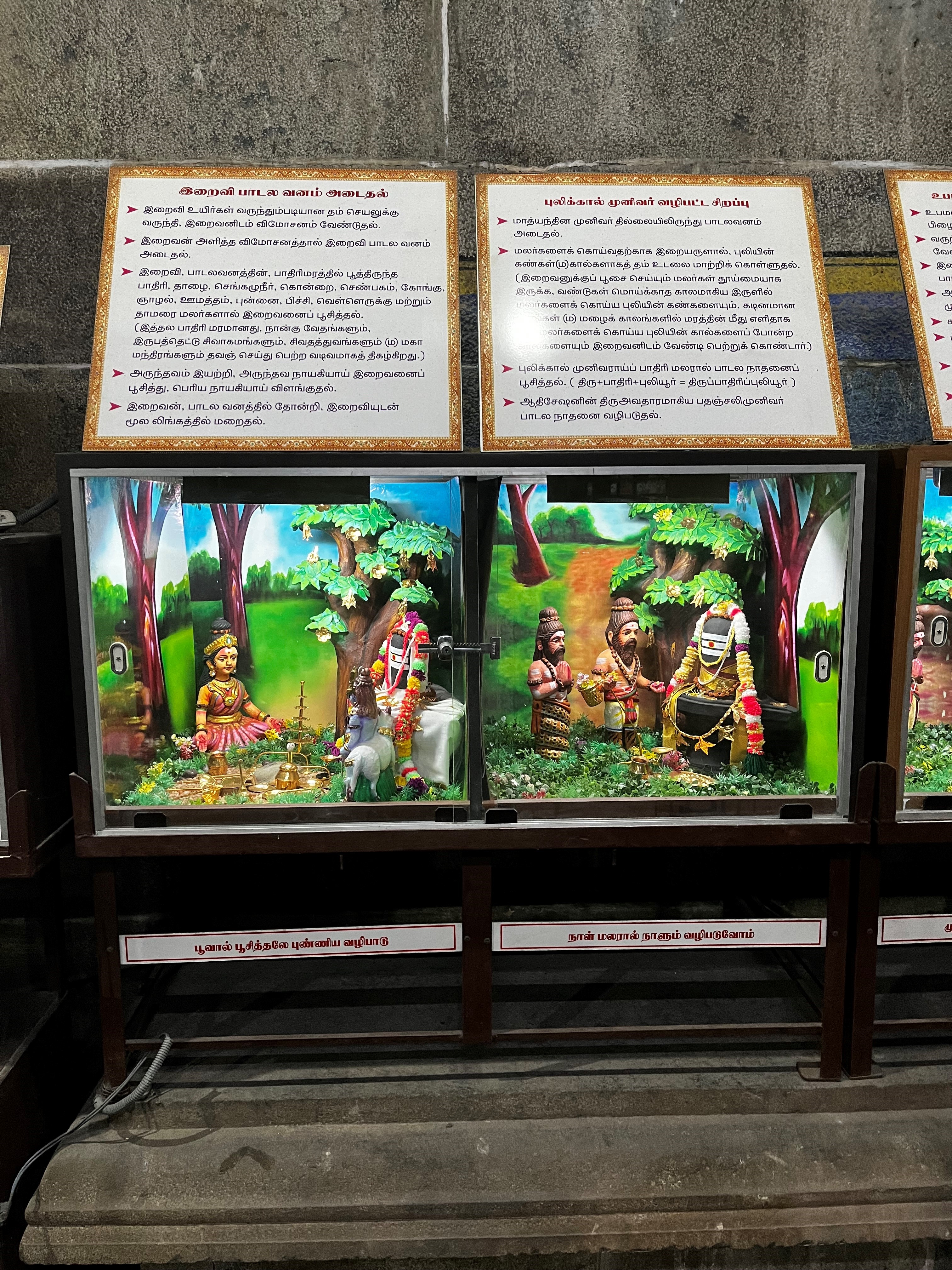
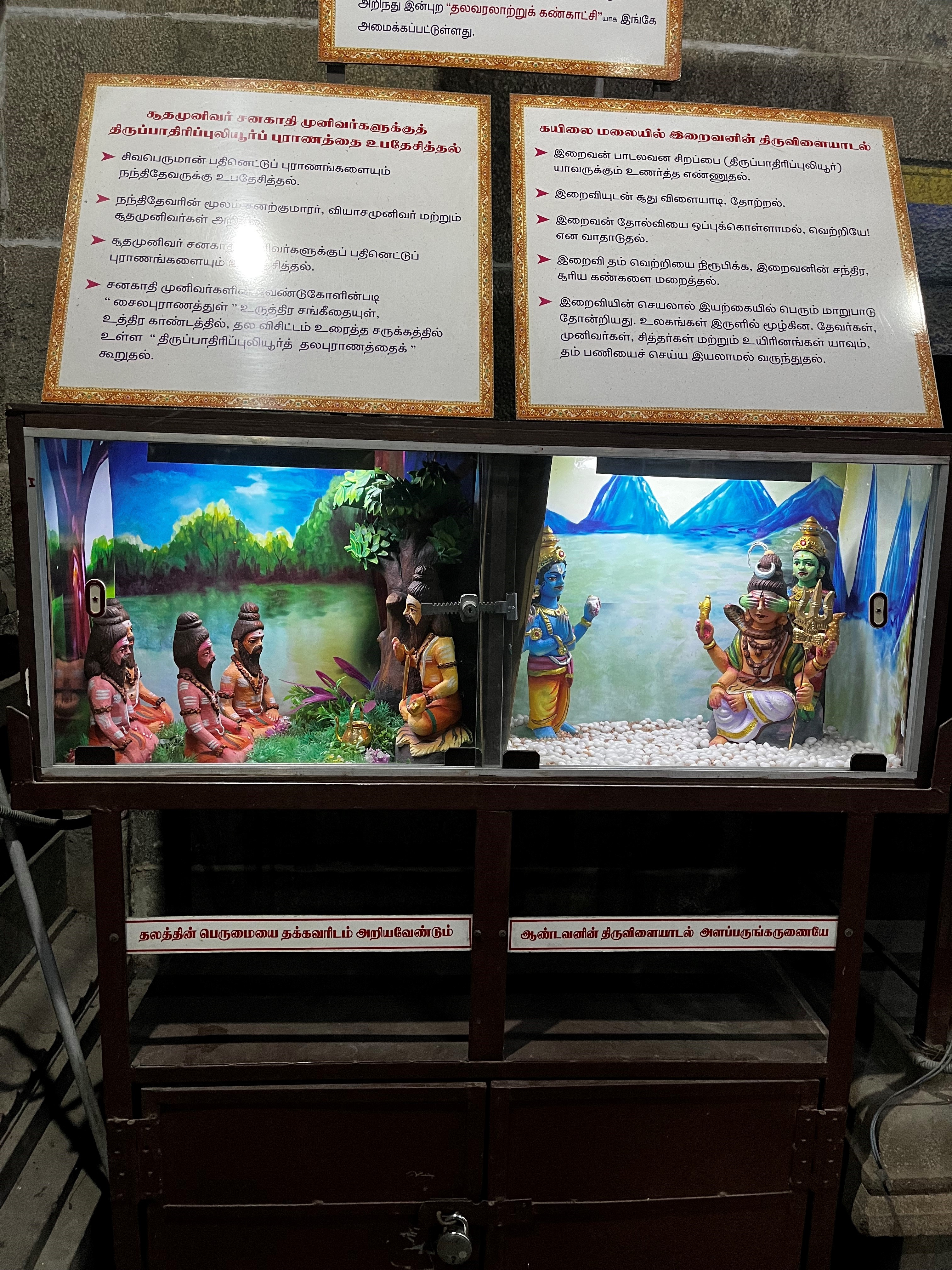
A must-see temple.
Day 3: 9 AM: We stood transfixed. After a drive through lush green fields on narrow, winding village roads, we had reached the temple, or should I say temples, as there are two of them opposite to each other. We had veered off the Villupuram-Chennai highway to reach this picturesque village, Thiruvamathur. It was a serene atmosphere.
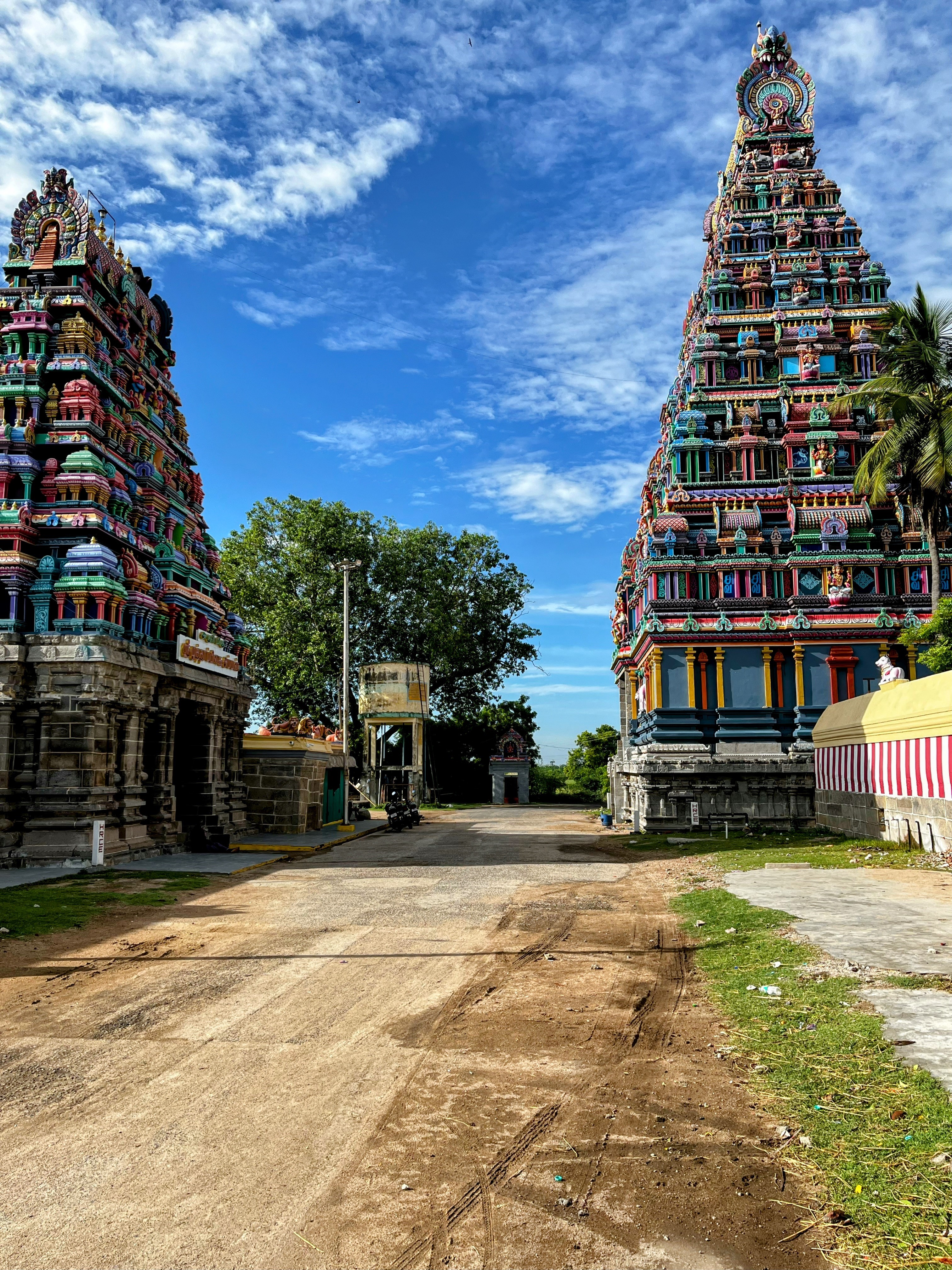
Another of the Paadal Petra Sthalam, though not many visit it, except during the temple festivals. Shiva is worshipped here as Abirameswarar and His consort as Muthambikai. While the lingam is said to be swayambhu, Mother’s idol was installed by Adi Shankara. Inscriptions here talk about the involvement of the Pandyas, Cholas and Vijayanagar rulers in expanding the temple. It is said the original temple did not have the gopuram or entrance tower. It was constructed much later with contributions from the public. What sets this temple apart from other Shiva temples, is that the Lord and His consort are not within the same temple complex but have separate shrines on either side of the road. There is a hole in the wall through which the divine couple could see each other, it is said.
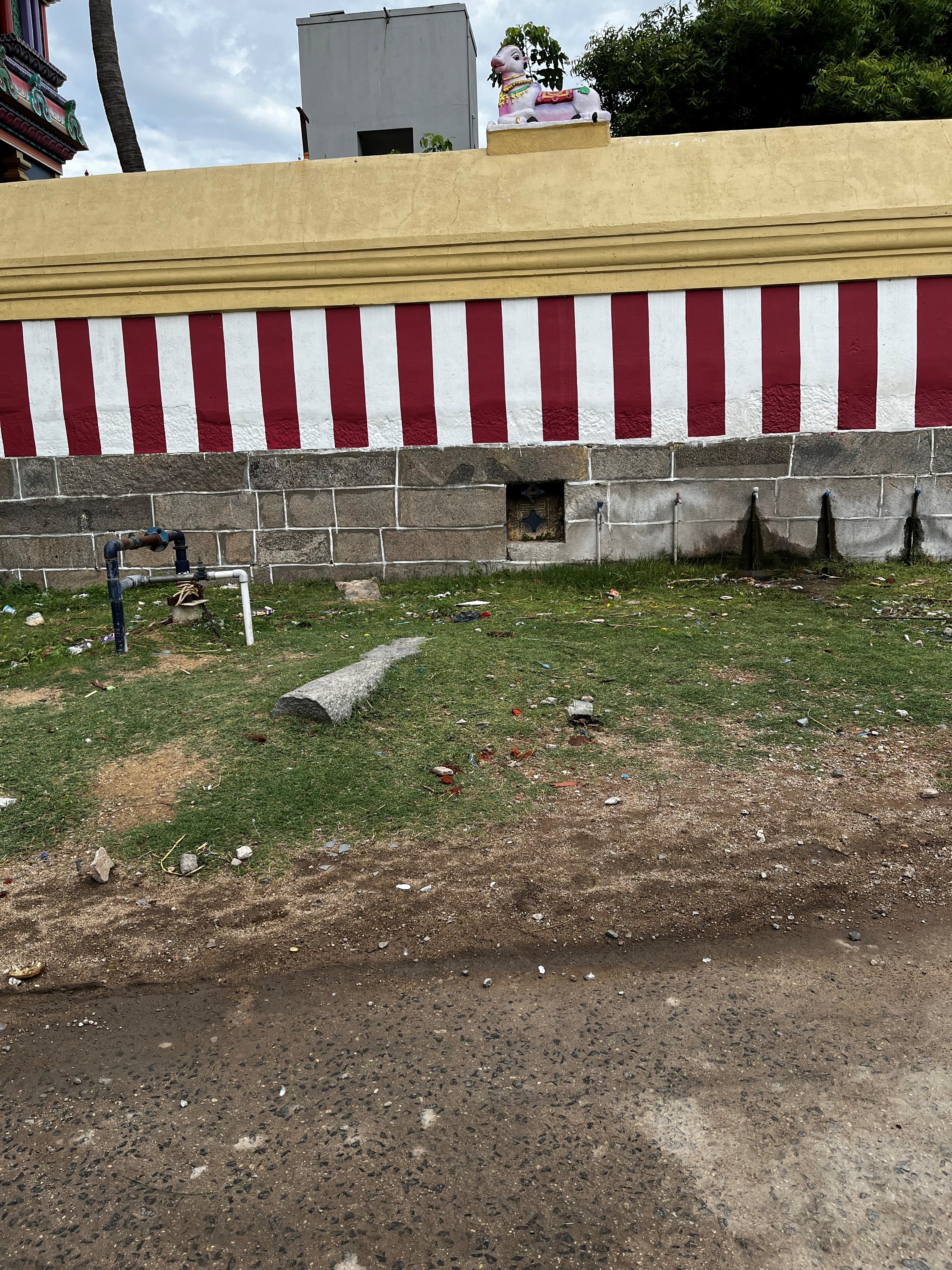
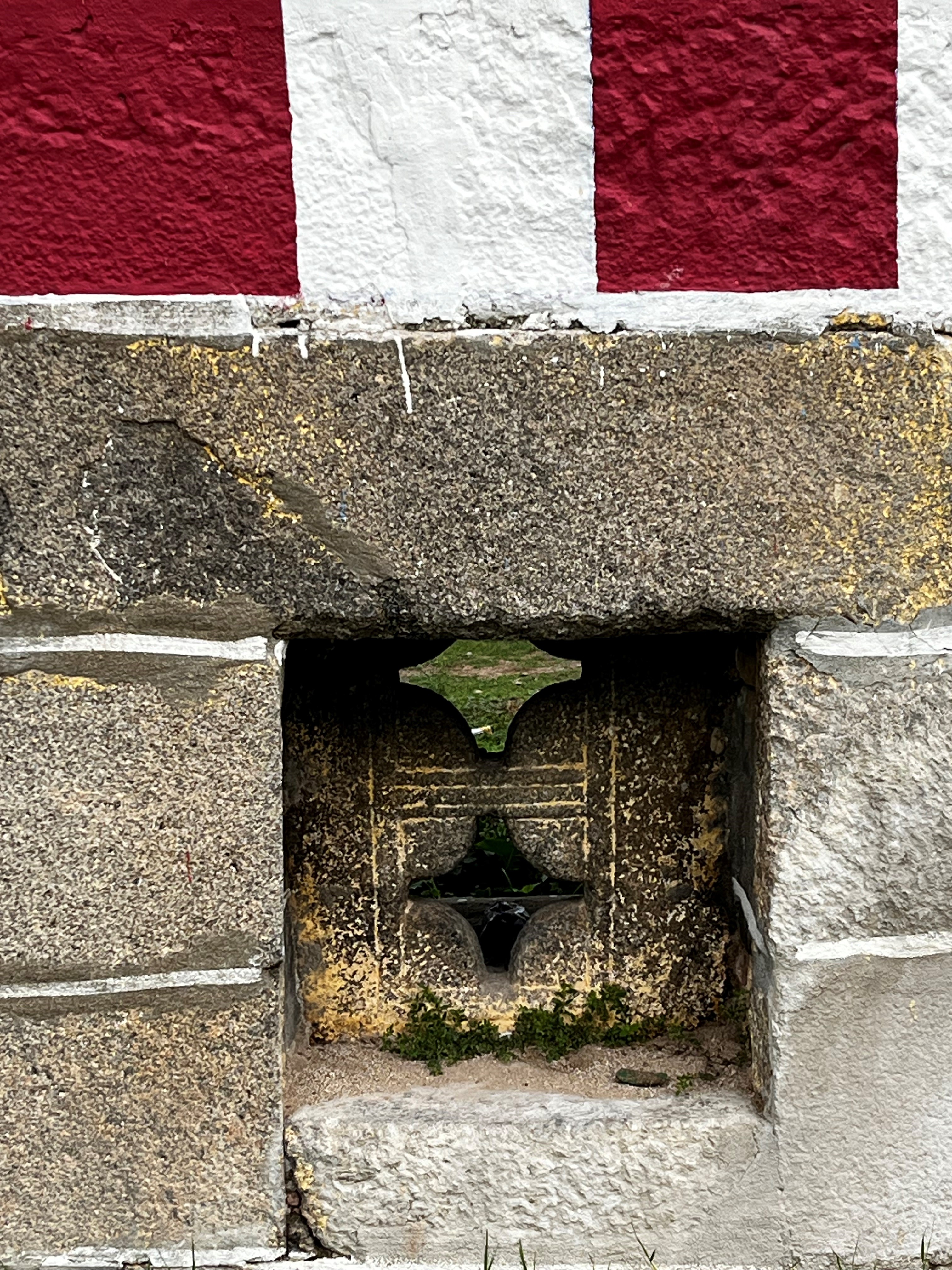
We were inside the Abirameswarar temple now but there was hardly anybody there……. wait, there was a family of four, but no sign of the priest. As we marveled at the sculptures and the entire temple complex itself that had been freshly painted, we could see a dog sleeping under a statue.
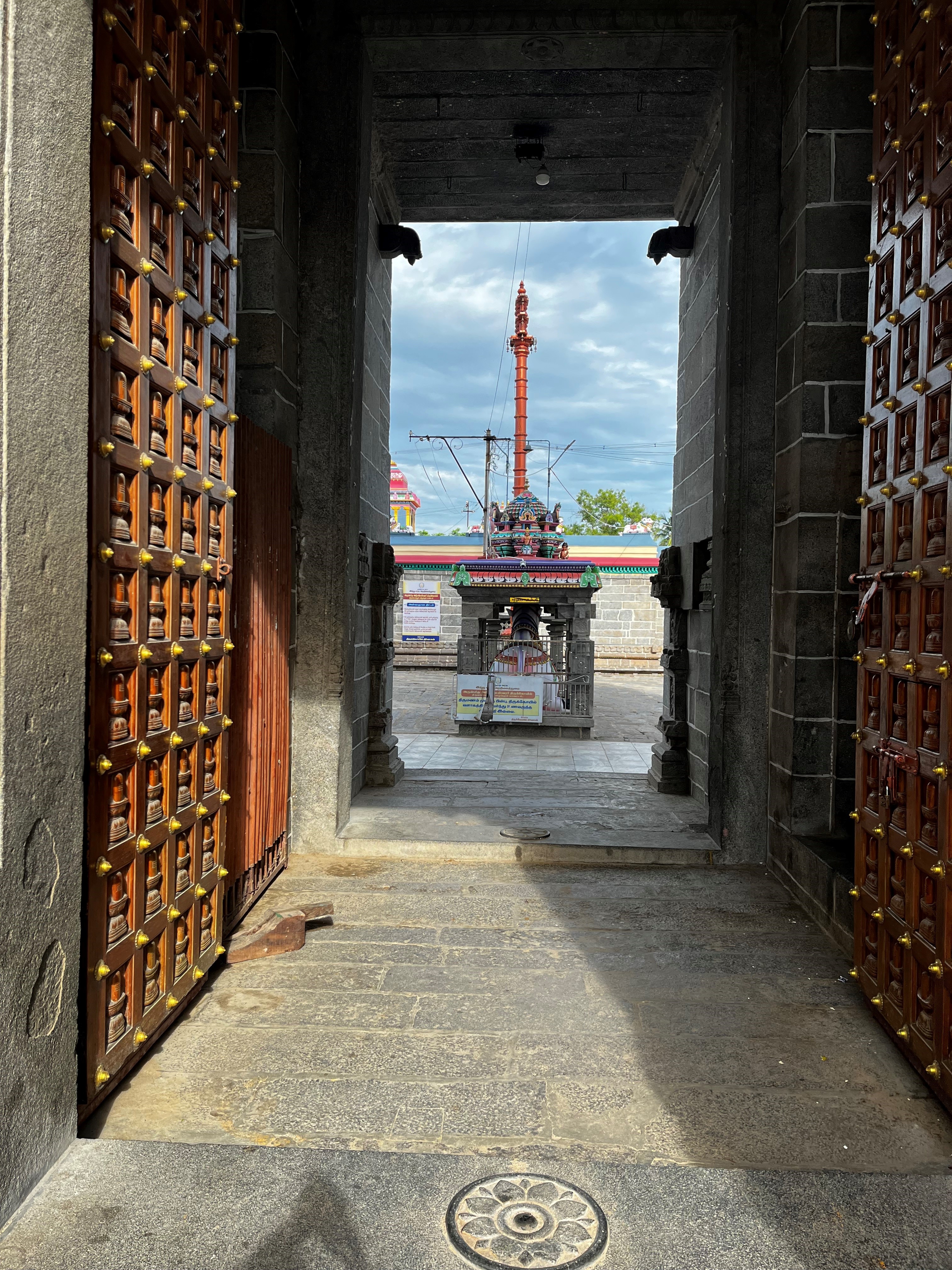
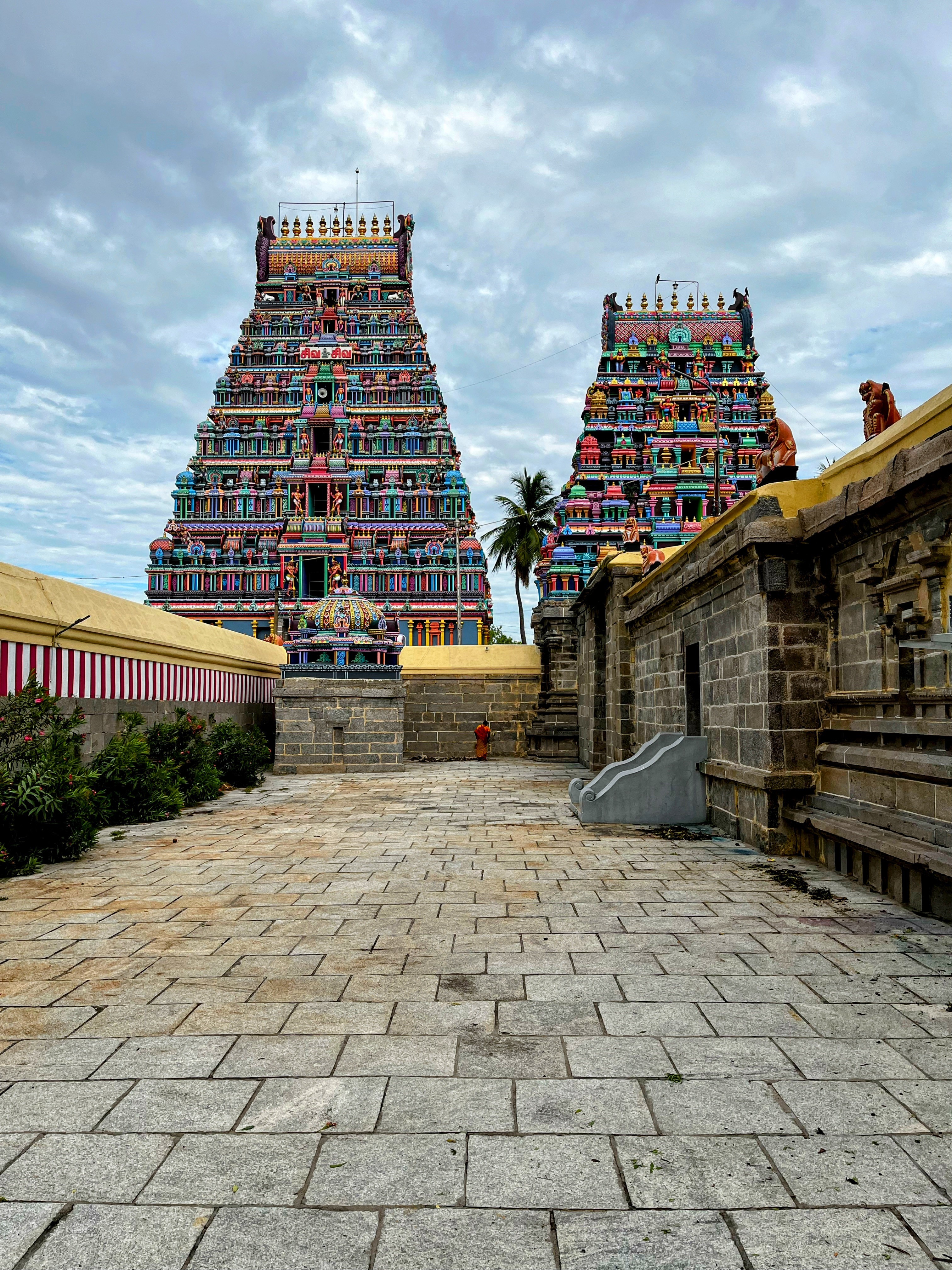

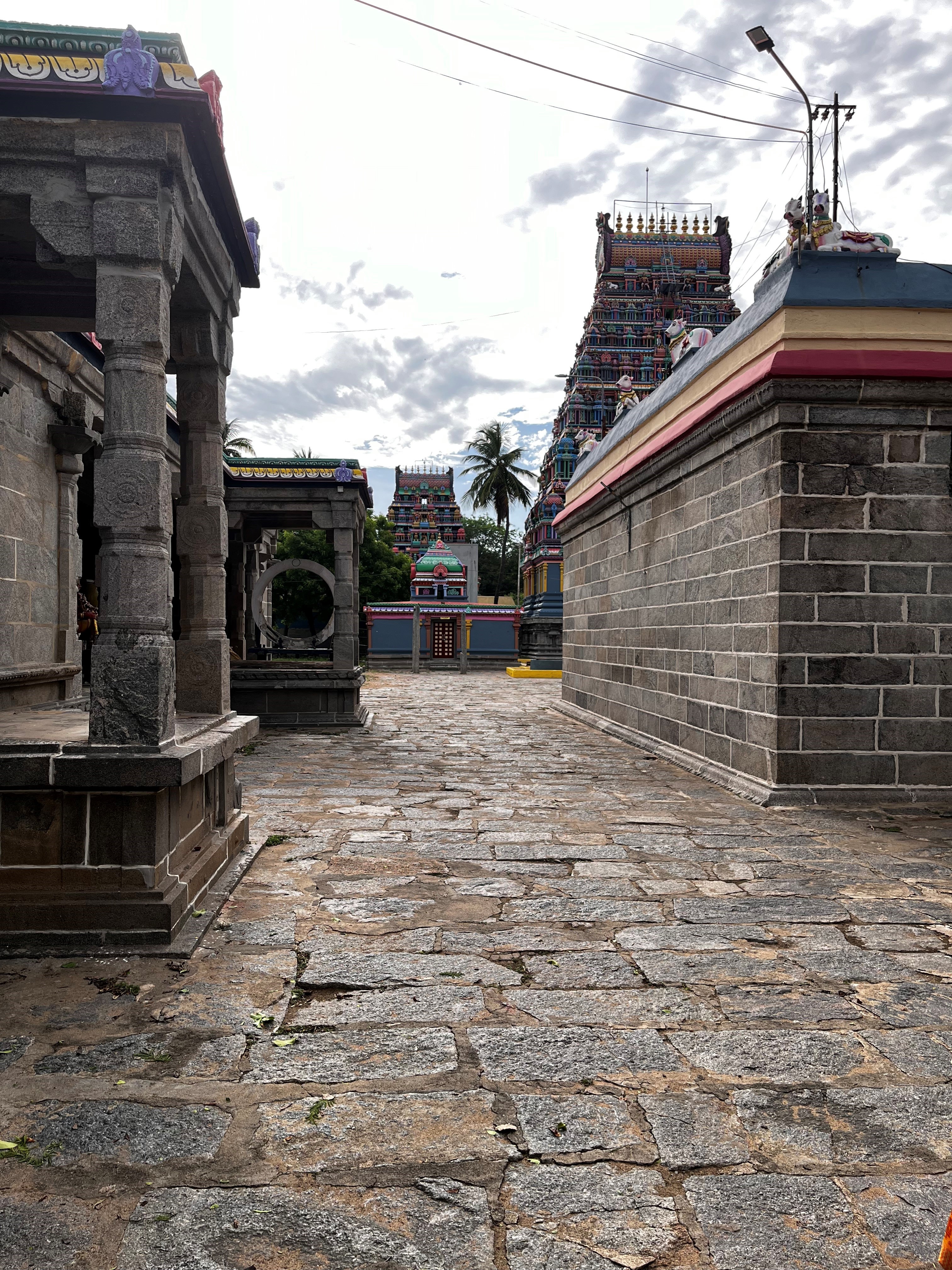
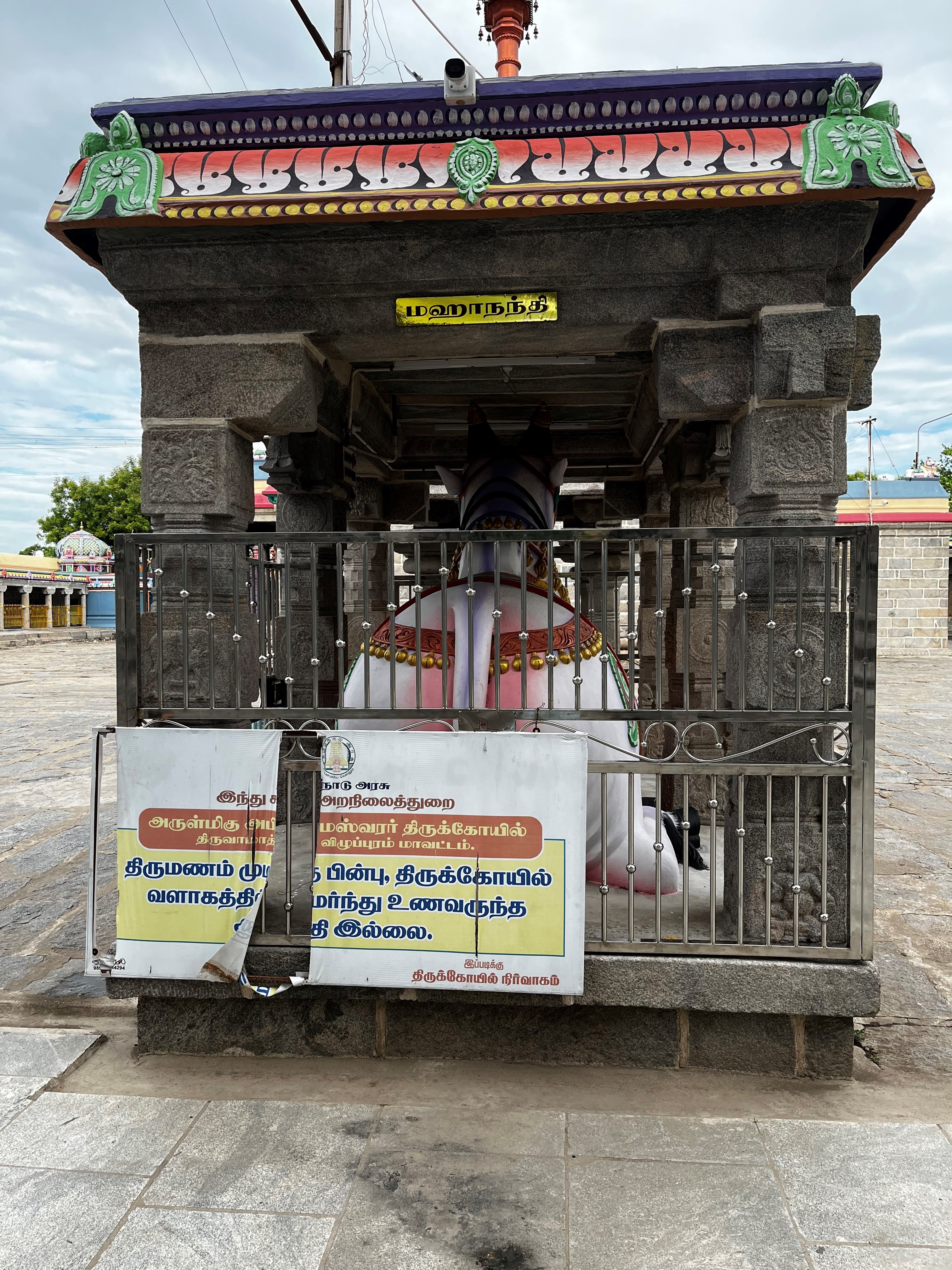
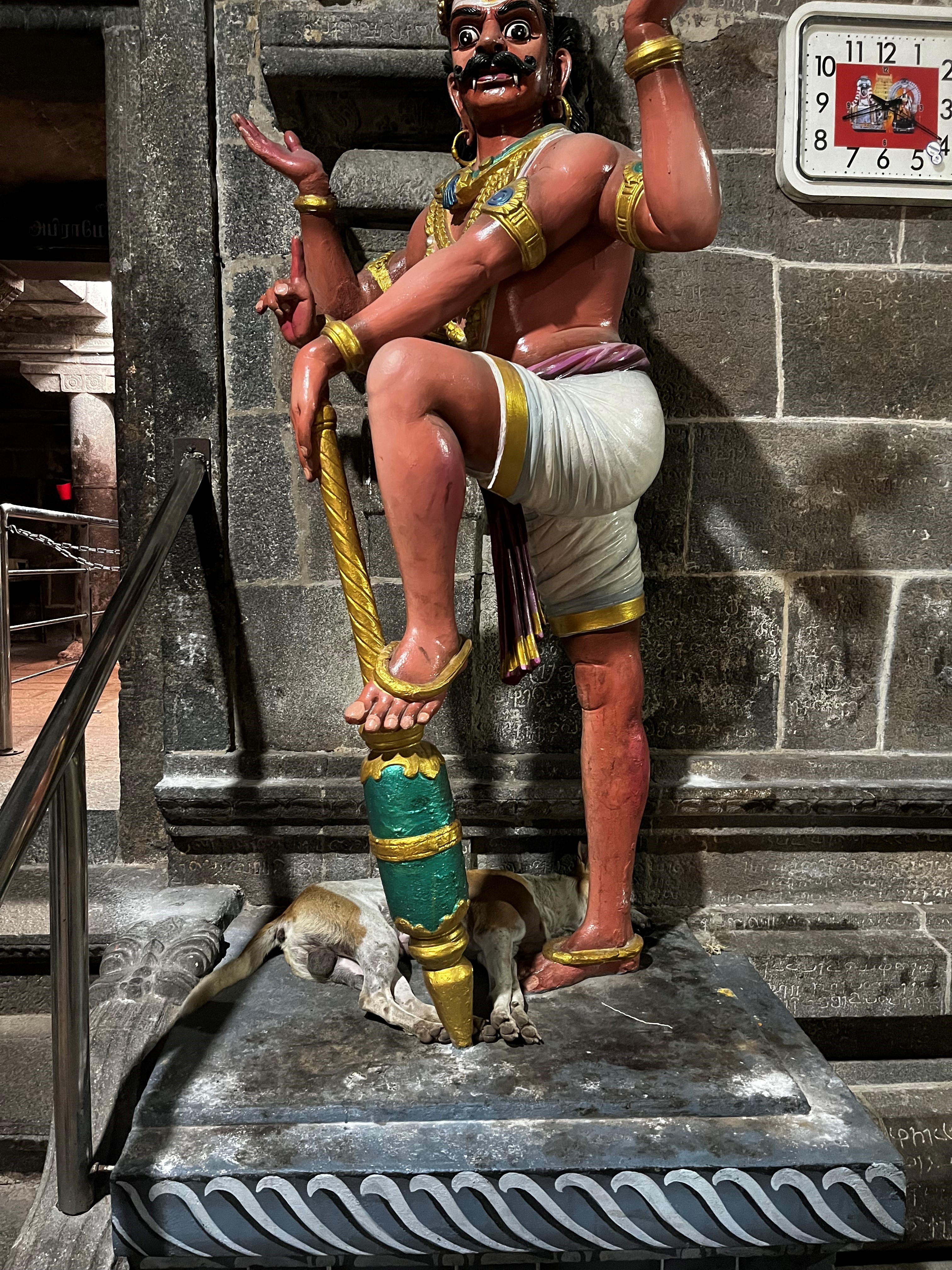
Now the priest had arrived and performed the aarti as we had our darshan. The priest explained the legend associated with this ancient 7th century temple. He asked us to take a closer look at the lingam that seemed to have some bulges/protrusions and also showed signs of some streaks, as though something had flown over it. Then he explained — When created, cows did not have horns, and they were tormented by other animals. The cows got together, along with Nandi and prayed to Shiva, who gave them horns. The thankful cows put their hooves up on the lingam in gratitude and performed abhisheka with their milk, accounting for the hoofmarks and the streaks. Hence the name Thiru Aa matha ur (Aa meaning cow, Matha meaning mother, in Tamil), that later became Thiruvamathur. We could see the almost defaced idol of another small Nandi close to the sanctum sanctorum. The Lord is called Abirameswarar because, it is said Rama worshipped Shiva here with ‘abhi’, meaning love/devotion after killing Ravana. Rama’s devotion to Abirameswarar is captured in the Thevaram written by Appar.
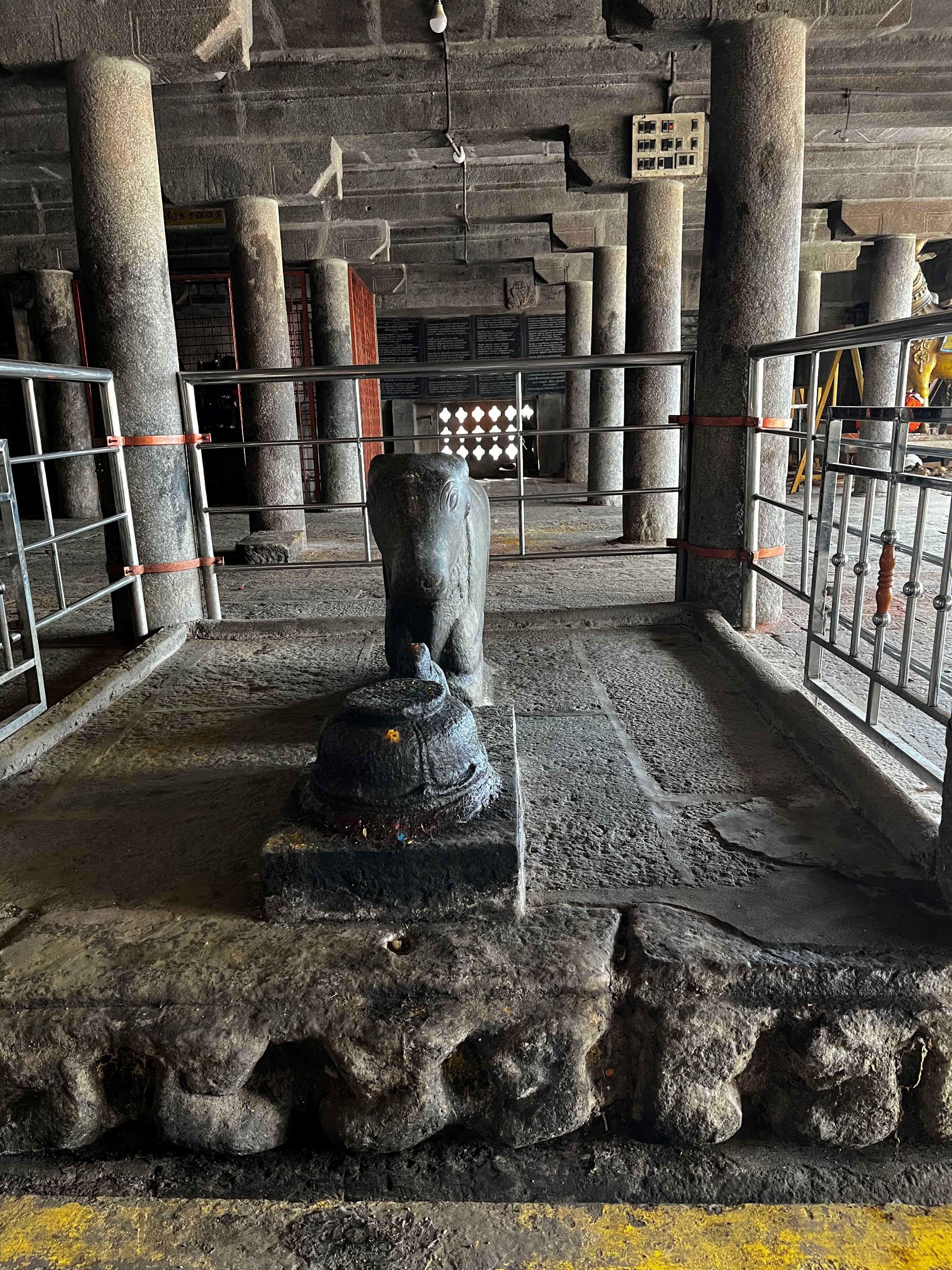
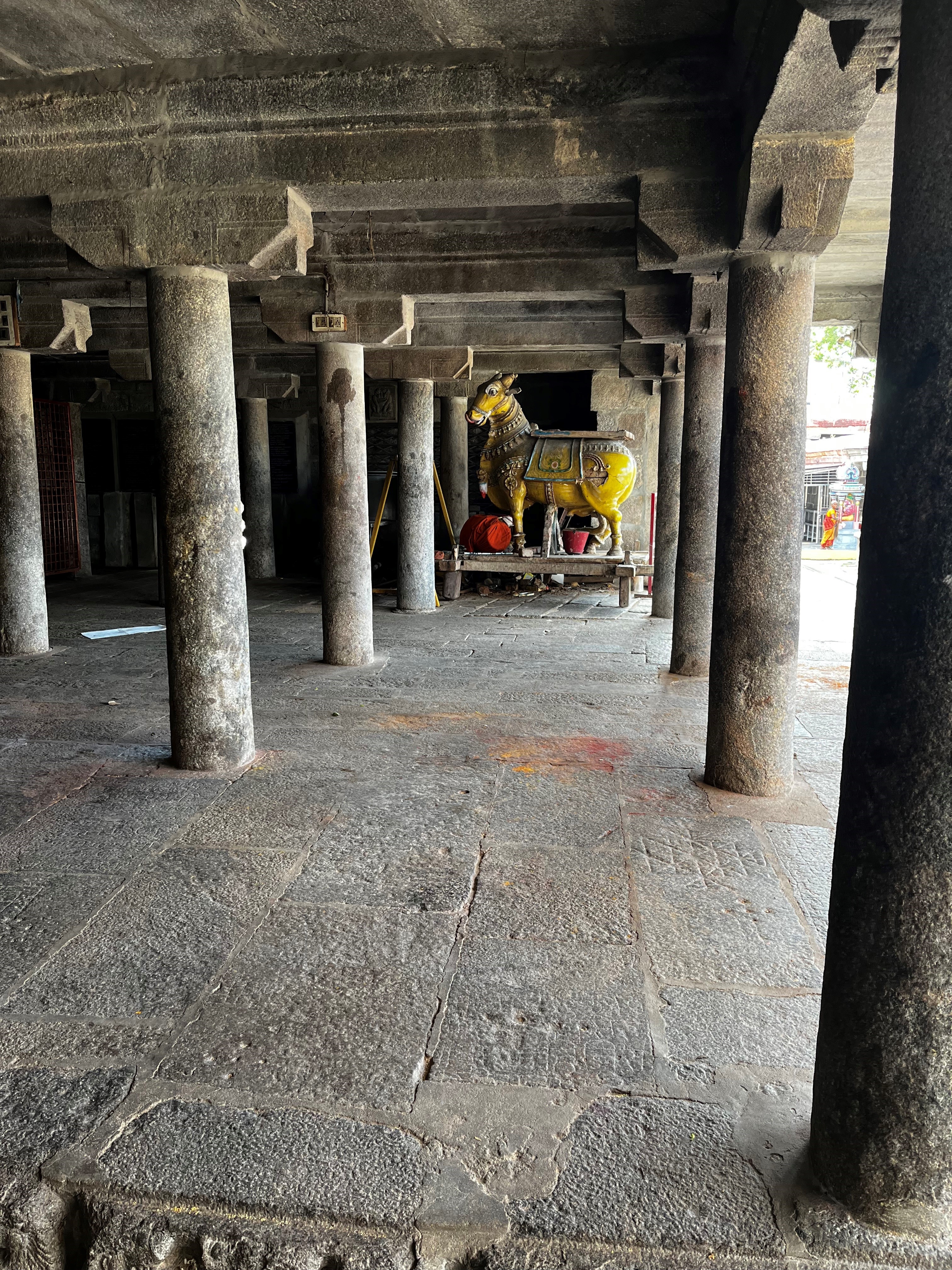

Now, time to visit the Mother, Muthambikai ,across the road. We entered the temple and found a lady cleaning the premises. The sanctum was not yet open. After a while, a priest walked over, opened it and performed the aarti. We were told that after the morning puja, the shrine was closed, as there were no visitors and on seeing us, the priest, who stays close by re-opened the shrine.
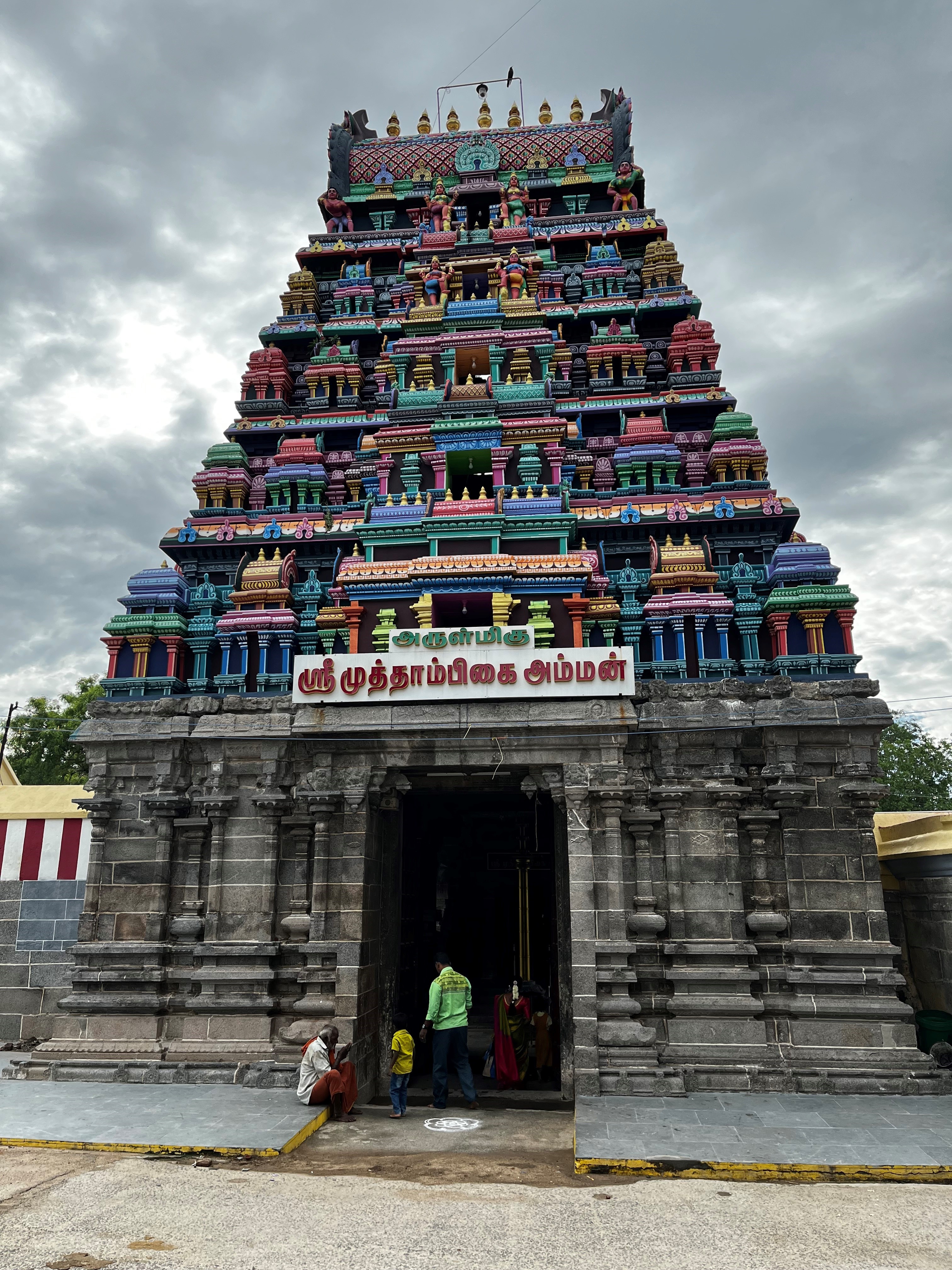
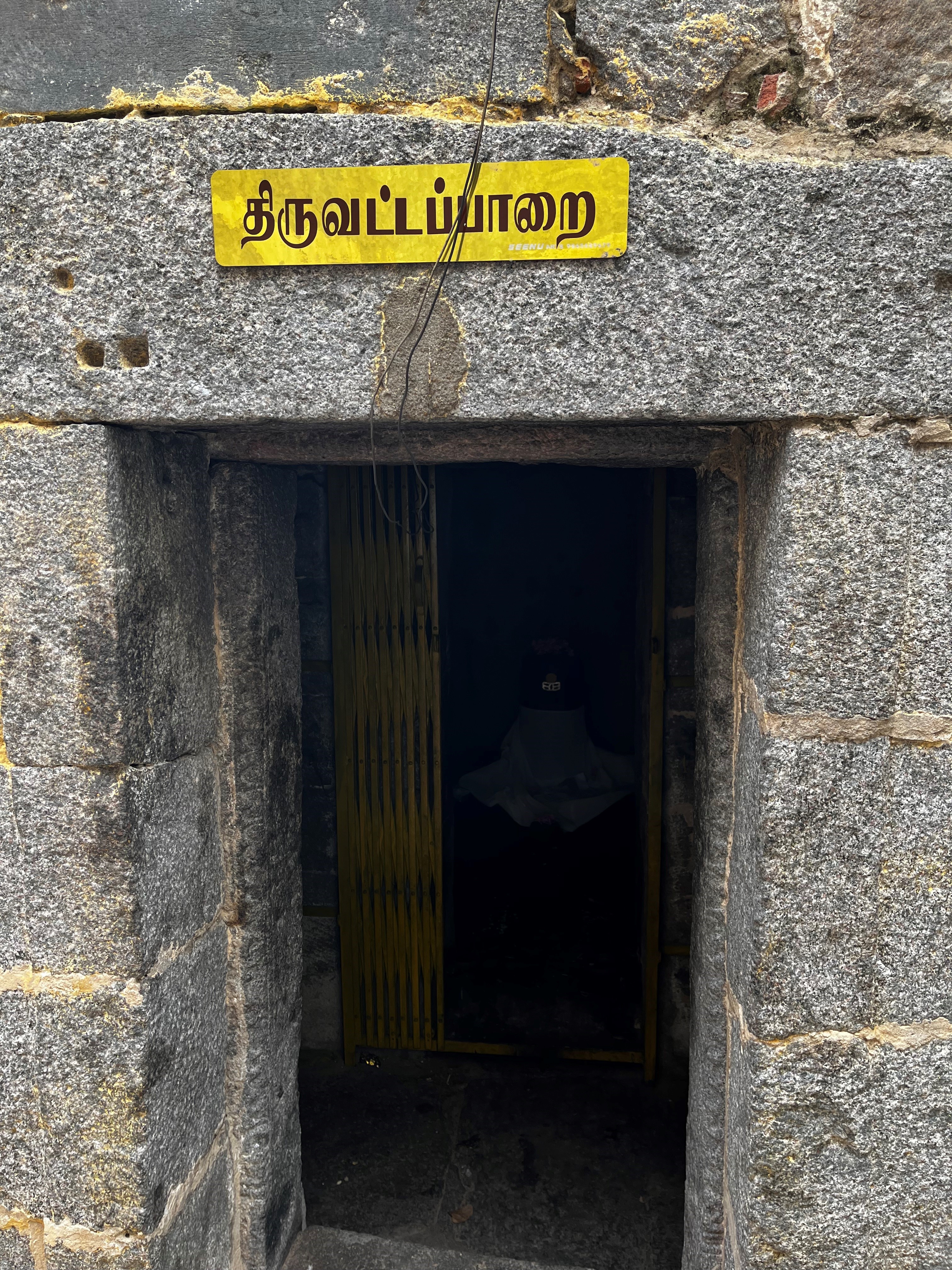
After the darshan, we walked out into the open courtyard that housed many smaller shrines. Of particular interest to us was a small platform called Thiruvattaparai or Satya Medai. It is beleived that people who have been wrongly accused/framed or those fighting cases, come here and when they state the truth or make a promise, all will be well. However, the goddess would punish those who utter a lie or fail to keep up a promise. It is said, when an elder brother tried to deprive his younger brother of his rightful property share and made a false promise here, the goddess had him bitten by a snake.
Great opportunity to visit these three temples in three days, in the midst of other activities. Apart from the spiritual satisfaction, it helped me understand the ancient nature of Shaivism, the way it has grown and sustained, despite the many challenges over the years and the history of the great Shaivite saints. Would like to visit as many of the Paadal Petra Sthalams as possible, and of course, write about the same too. There are great commonalities in these temples yet marked differences too.
Discover more from BalasBroadcast
Subscribe to get the latest posts sent to your email.
அருமையான பதிவு இளவழகா. புகைப்படங்களும் அருமை. அடுத்து எங்கே?